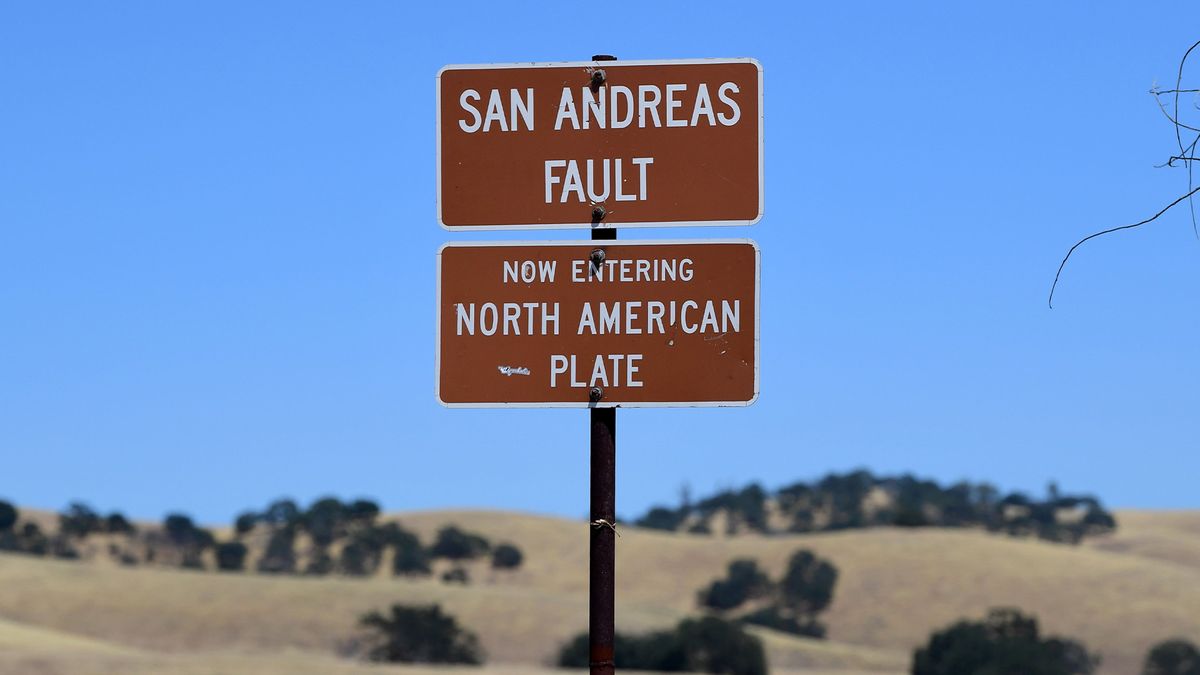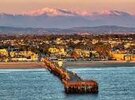Mr. Premise
The Living Force
http://today.reuters.com/news/newsArticle.aspx?type=scienceNews&storyID=2006-06-21T173055Z_01_L21522318_RTRUKOC_0_US-SCIENCE-EARTHQUAKE.xml
Southern San Andreas fault waiting to explode: report
Wed Jun 21, 2006 1:31 PM ET
By Jeremy Lovell
LONDON (Reuters) - The southern end of the San Andreas fault near Los Angeles, which has been still for more than two centuries, is under immense stress and could produce a massive earthquake at any moment, a scientist said on Wednesday.
Yuri Fialko, of the Scripps Institution of Oceanography at La Jolla, California, said that given average annual movement rates in other areas of the fault, there could be enough pent-up energy in the southern end to trigger a cataclysmic jolt of up to 10 meters (32 ft).
"The observed strain rates confirm that the southern section of the San Andreas fault may be approaching the end of the interseismic phase of the earthquake cycle," he wrote in the science journal Nature.
A sudden lateral movement of 7 to 10 meters would be among the largest ever recorded.
According to the U.S. Geological Survey (USGS), the earthquake that destroyed San Francisco in 1906 was produced by a sudden movement of the northern end of the fault of up to 21 ft.
Fialko said there had been no recorded movement at the southern end of the fault -- the 800-mile long geological meeting point of the Pacific and the North American tectonic plates -- since the dawn of European settlement in the area.
He said this lack of movement for 250 years correlated with the predicted gaps between major earthquakes at the southern end of the fault of between 200 and 300 years.
Elsewhere on the fault, there were average slippage rates up to a couple of centimeters a year that prevented the build-up of explosive pressure deep underground.
When these became blocked and then suddenly broke free they produced tremors or earthquakes of varying intensity depending on the movement that had taken place before and the duration of the blockage.
USGS says the most recent major earthquakes in the northern and central zones of the San Andreas fault were in 1857 and 1906.
Fialko said there were three possible explanations for the lack of observed movement in the southern section -- creepage under the surface that had no external manifestation, that it simply might not move as much as the rest or a major blockage.
"Except for the first possibility above, the continued quiescence increases the likelihood of a future event," he wrote.
Making calculations based on a wide range of land and satellite observations, he discounted the idea of creepage and warned of impending disaster.
"Regardless of fault geometry and mechanical properties of the ambient crust, results presented in this study lend support to intermediate-term forecasts of a high probability of major earthquakes on the southern SAF system," Fialko said.
Southern San Andreas fault waiting to explode: report
Wed Jun 21, 2006 1:31 PM ET
By Jeremy Lovell
LONDON (Reuters) - The southern end of the San Andreas fault near Los Angeles, which has been still for more than two centuries, is under immense stress and could produce a massive earthquake at any moment, a scientist said on Wednesday.
Yuri Fialko, of the Scripps Institution of Oceanography at La Jolla, California, said that given average annual movement rates in other areas of the fault, there could be enough pent-up energy in the southern end to trigger a cataclysmic jolt of up to 10 meters (32 ft).
"The observed strain rates confirm that the southern section of the San Andreas fault may be approaching the end of the interseismic phase of the earthquake cycle," he wrote in the science journal Nature.
A sudden lateral movement of 7 to 10 meters would be among the largest ever recorded.
According to the U.S. Geological Survey (USGS), the earthquake that destroyed San Francisco in 1906 was produced by a sudden movement of the northern end of the fault of up to 21 ft.
Fialko said there had been no recorded movement at the southern end of the fault -- the 800-mile long geological meeting point of the Pacific and the North American tectonic plates -- since the dawn of European settlement in the area.
He said this lack of movement for 250 years correlated with the predicted gaps between major earthquakes at the southern end of the fault of between 200 and 300 years.
Elsewhere on the fault, there were average slippage rates up to a couple of centimeters a year that prevented the build-up of explosive pressure deep underground.
When these became blocked and then suddenly broke free they produced tremors or earthquakes of varying intensity depending on the movement that had taken place before and the duration of the blockage.
USGS says the most recent major earthquakes in the northern and central zones of the San Andreas fault were in 1857 and 1906.
Fialko said there were three possible explanations for the lack of observed movement in the southern section -- creepage under the surface that had no external manifestation, that it simply might not move as much as the rest or a major blockage.
"Except for the first possibility above, the continued quiescence increases the likelihood of a future event," he wrote.
Making calculations based on a wide range of land and satellite observations, he discounted the idea of creepage and warned of impending disaster.
"Regardless of fault geometry and mechanical properties of the ambient crust, results presented in this study lend support to intermediate-term forecasts of a high probability of major earthquakes on the southern SAF system," Fialko said.


